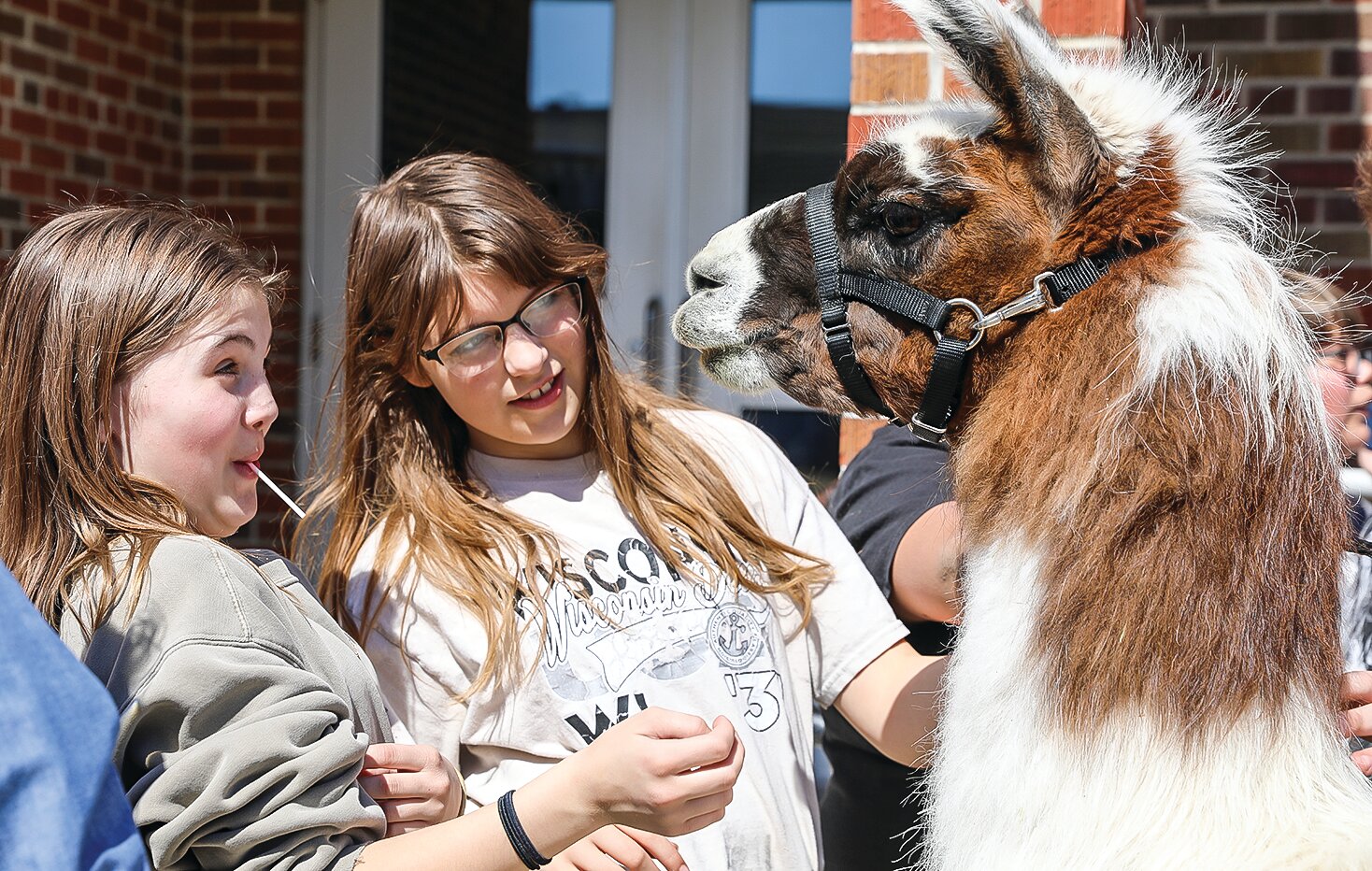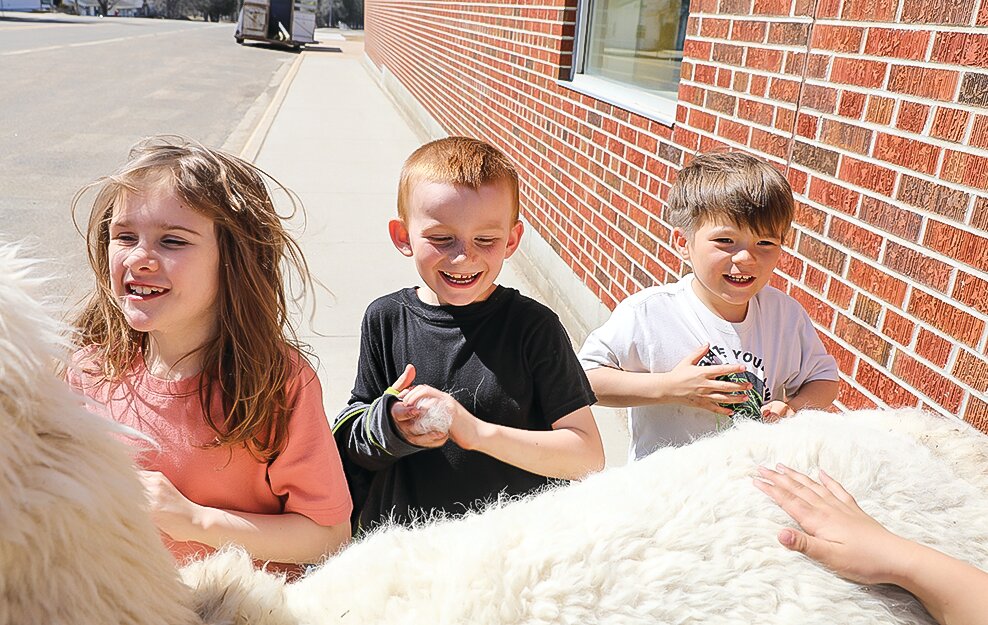Support the Timberjay by making a donation.
Close encounters of the llama kind
Rent-a-llama proves a hit with local students
TOWER- Tower-Soudan second-grade teacher Charissa Dahl had been teaching her students about llamas, when she saw that Cook’s Country Connection, a petting zoo in Cook, had a …
This item is available in full to subscribers.
Attention subscribers
To continue reading, you will need to either log in to your subscriber account, below, or purchase a new subscription.
Please log in to continue |
Close encounters of the llama kind
Rent-a-llama proves a hit with local students
TOWER- Tower-Soudan second-grade teacher Charissa Dahl had been teaching her students about llamas, when she saw that Cook’s Country Connection, a petting zoo in Cook, had a “rent-a-llama” program.
“I told Principal Jirik that we NEEDED that llama,” she said. Dahl, a longtime teacher in Tower, can be pretty persistent when she needs something for her students. Lo and behold, Jirik found the $100 needed to secure an hour-long visit.
The llama visit was a total surprise for all the students and was the perfect way to end a Friday afternoon on a sunny, unseasonably warm day.
The students got a chance not just to visit a llama, but also a “cousin” alpaca, both members of the camel family. Both are native to South America. Alpacas are raised mostly for their fiber, which produces a soft and warm yarn, which is softer than cashmere and warmer than wool. Llamas are a domesticated member of the camel family, used by Andean cultures since the pre-Columbian era. They are used as pack animals and also raised for meat.
Preschoolers to sixth-graders all got a chance to meet and greet these two very peaceful and agreeable animals, coming out in small groups. The younger elementary students, who had been studying llamas, shared all their newly-gained llama knowledge with owner Lois Pajari, and showed her the llama artwork they had created. Pajari showed the students how to comb the long-fibered wool and spin it with their fingers into yarn.
Pajari explained to the students how to behave around the animals, and to keep their voices down because they do not like loud voices, which the animals may interpret as a threat.
She also explained that the animals will try to sniff the childrens’ breath, as a way to get to know them. She also explained that these animals may spit if they get upset, but that these two who go out on “tour” are well behaved and don’t get upset around small crowds.
The llama and alpaca were amazingly tolerant of all the attention, and even enjoyed getting up close to the children’s faces. They both enjoyed having their fur brushed, and many of the students got to take home a clump of fresh llama or alpaca hair.
Pajari said she got the idea for the traveling llama program from an article an out-of-state friend had sent her.
“I had been knocking it around for a while,” she said, “and then this March I thought I would see if there was any interest.”
Their first outing was to Scenic Rivers Medical Center in Cook.
“It was a hoot!” she said. “Since then, we have been doing one location a week.”
The “rent-a-llama” program will continue until the petting farm opens for regular weekend hours starting on May 5, and then resume next fall after the farm closes to the public at the end of October. She hopes to continue offering it on a regular basis during spring and fall.
The farm currently has four llamas and six alpacas. As for baby llamas or alpacas, she said they’ve only had one baby alpaca, which are called a cria. She said there is a small chance they will have a llama-alpaca cross baby this summer.
For more information, visit their website at cookscountryconnection.com or follow them on Facebook.











